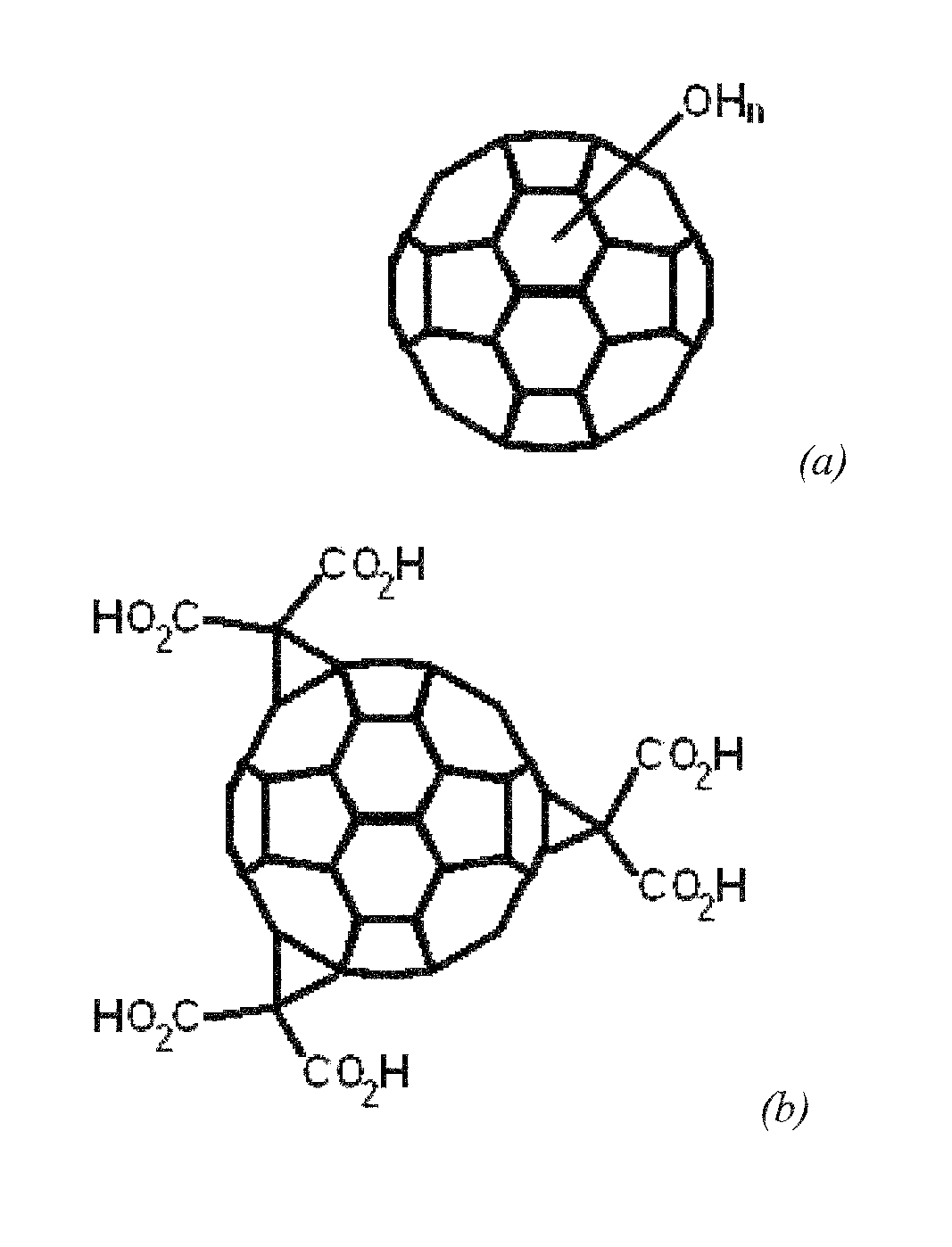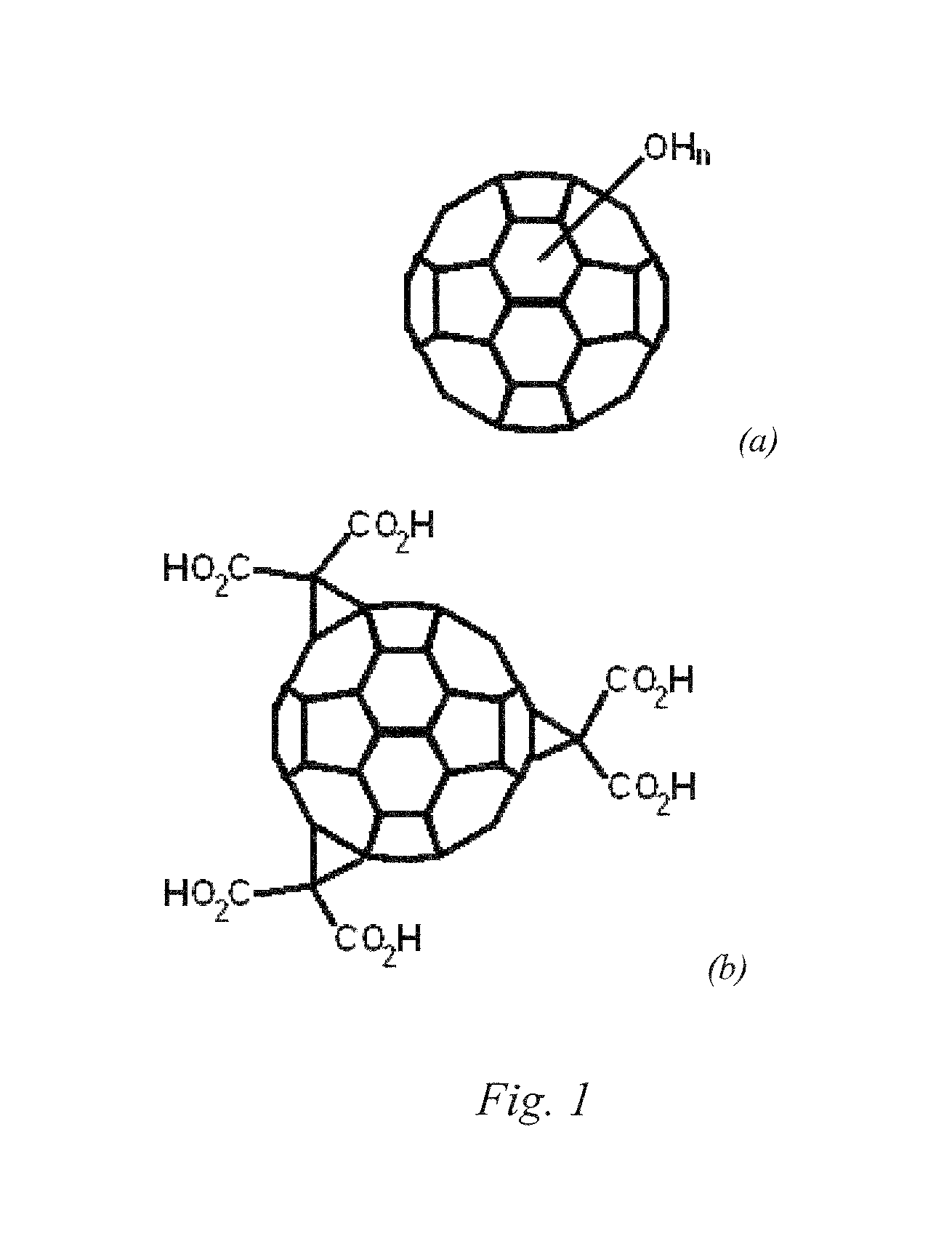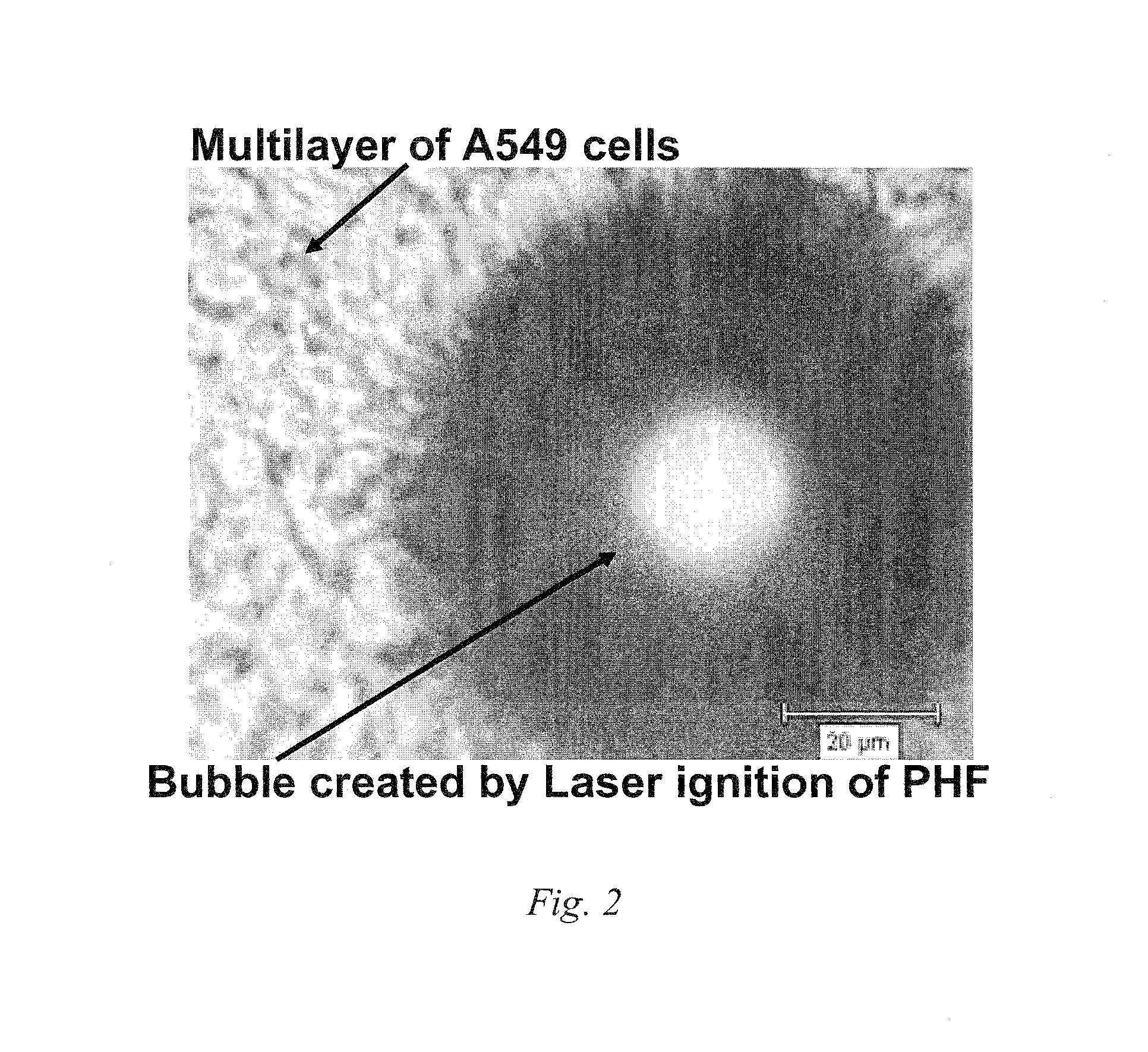Systems and methods based on radiation induced heating or ignition of functionalized fullerenes
a technology of functionalized fullerene and radiation induced heating, which is applied in the field of systems and methods based on radiation induced heating or ignition of functionalized fullerene, can solve the problems of causing structural reformation, affecting the effect of the effect of promoting damage to non-targeted regions of tissue, and other ignition methods such as plasma jet injection or flame jet initiation and high-power laser ignition,
- Summary
- Abstract
- Description
- Claims
- Application Information
AI Technical Summary
Benefits of technology
Problems solved by technology
Method used
Image
Examples
example 1
[0053]Functionalized fullerenes, such as polyhydroxy fullerenes (PHF) and carboxy fullerenes (CF) were found to ignite when exposed to radiation through a wide range of visible and NIR wavelengths above a threshold intensity. Ignition led to instantaneous decomposition in air. The ignition process for PHF was observed with laser radiation at three different wavelengths; 785 nm (Near Infrared), 540.5 nm (Green) and 488 nm (Blue). The radiation induced ignition experiment with carboxy fullerenes and N-ethyl-polyamino-C60 was conducted with a 785 nm Laser. In both cases, the threshold intensity for observed ignition was less than 1 kW / cm2.
example 2
[0054]Experiments were conducted with A549 (Lung Mesothelial Carcinoma) cells. In a first step, varying quantities of PHF were placed on top of a multilayer of A549 cells cultured on magnesium fluoride crystals. The cells were submerged in aqueous growth media RPMI-1640, supplemented with 5% Fetal Bovine Serum and 1% Antibiotic, and exposed to a laser emitting at 785 nm wavelength. Sparking was observed at the focal point followed by popping sounds, which was attributed to either photo-acoustic effect or bursting of A549 cells. The observed damage to cells was dependent on the concentration of PHF. The damage was restricted to the top layer of cells at lower concentrations of PHF, whereas at higher concentrations of PHF, the ignition led to damage of multiple layers of cells as shown in FIG. 2, which shows a bubble created by laser ignition of PHF and clearly demonstrates the killing of the cancer cells.
example 3
[0055]Another set of experiments was conducted with PHF coated on folate conjugated silica nanoparticles. The folate conjugation assists in uptake of nanoparticles by living cells, particularly cancer cells. The PHF coated nanoparticles were incubated for 24 hours with A549 cells in growth media for internalization. The A549 cells in the media were then exposed to radiation from a 785 nm laser for 1 second and 10 seconds as shown in the series of images presented in FIG. 3. After one second of exposure, the irradiated A549 cells appear granulated suggesting that the cells are under stress and in the process of cell death. This indicates that heating, short of ignition, of functionalized fullerenes causes granulation of associated cells. Further irradiation with the laser, for 10 seconds, resulted in radiation induced ignition and creation of a bubble. However, nearby cells were not affected, suggesting that hyperthermia can be controlled by focusing of the radiation.
PUM
| Property | Measurement | Unit |
|---|---|---|
| width | aaaaa | aaaaa |
| width | aaaaa | aaaaa |
| wavelength | aaaaa | aaaaa |
Abstract
Description
Claims
Application Information
 Login to View More
Login to View More - R&D
- Intellectual Property
- Life Sciences
- Materials
- Tech Scout
- Unparalleled Data Quality
- Higher Quality Content
- 60% Fewer Hallucinations
Browse by: Latest US Patents, China's latest patents, Technical Efficacy Thesaurus, Application Domain, Technology Topic, Popular Technical Reports.
© 2025 PatSnap. All rights reserved.Legal|Privacy policy|Modern Slavery Act Transparency Statement|Sitemap|About US| Contact US: help@patsnap.com



